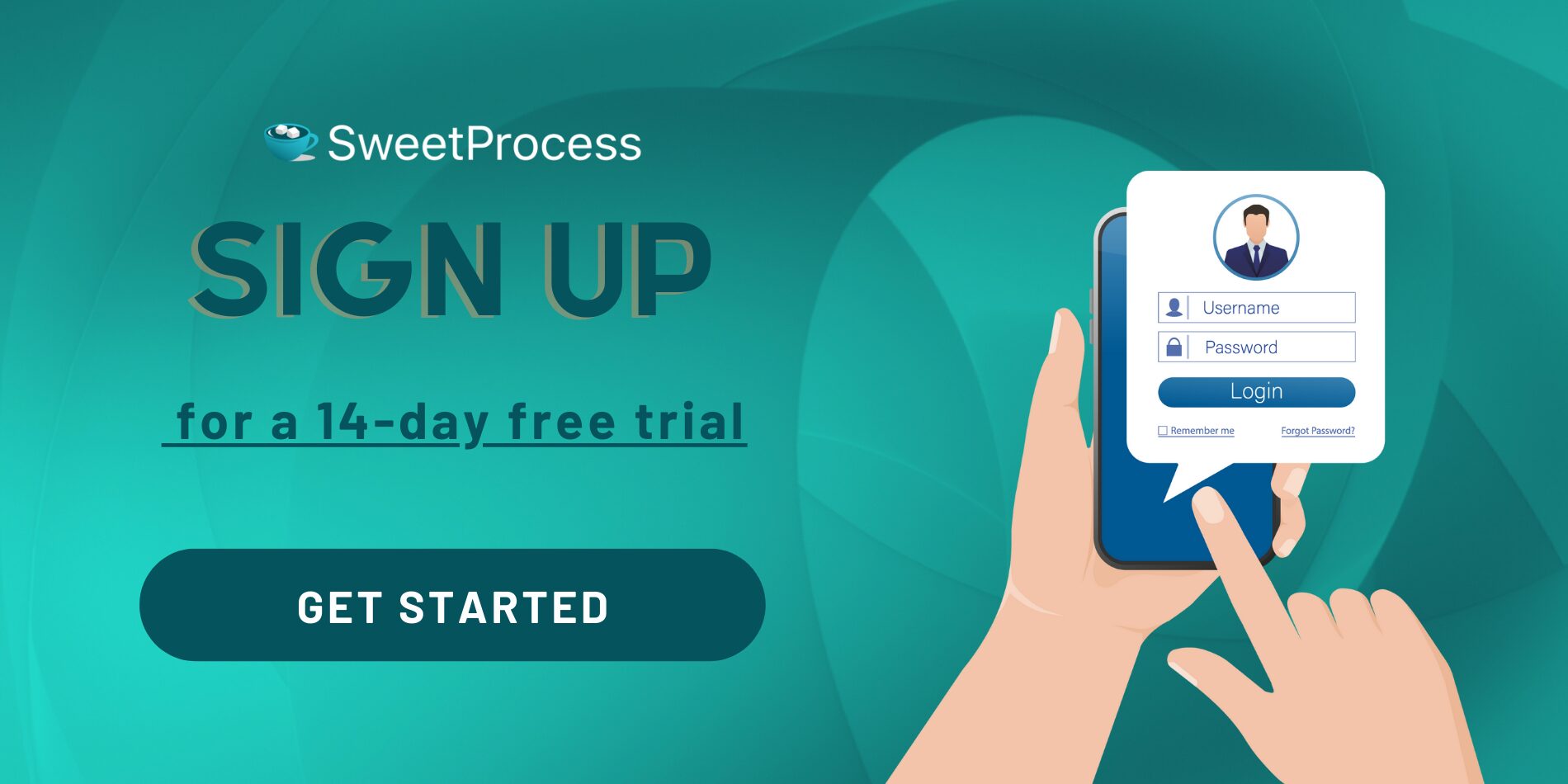Last Updated on April 21, 2025 by Owen McGab Enaohwo

In 2024, mid-sized businesses dedicated the most hours to employee training, averaging approximately 53 hours per employee. Imagine investing all that time training your new and seasoned employees, only for them to forget key details, make avoidable mistakes, or constantly ask for clarification.
Without a structured employee training manual, much of that effort goes to waste, leading to inefficiencies and inconsistent performance. Managers and supervisors will answer the same questions while employees struggle to find the right information to execute their tasks.
A training manual solves all these issues by outlining processes and procedures, best practices, and key company information, ensuring employees have the resources they need to succeed. It can be used for new hire onboarding or as refresher courses for current employees. Once you document your workflows, you reduce the need for constant supervision, allowing teams to work more efficiently.
So, how can you create a training manual for your company? We’ll explore 11 training manual examples that can help your business grow and their importance.
Table of Contents
11 Training Manual Examples To Help Your Business Grow
Why Are Training Manuals Important?
How To Create Effective Training Manuals Within SweetProcess
6 Things Your Training Manual Should Include
Training Manual Best Practices
How To Make a Training Manual Interactive
Enhance Your Company’s Training Manual With SweetProcess
11 Training Manual Examples To Help Your Business Grow
Training manuals are an essential part of employee training and development. Below, we explore 11 different types of training manual templates, each designed to address specific business needs.
1) Standard Training Manual
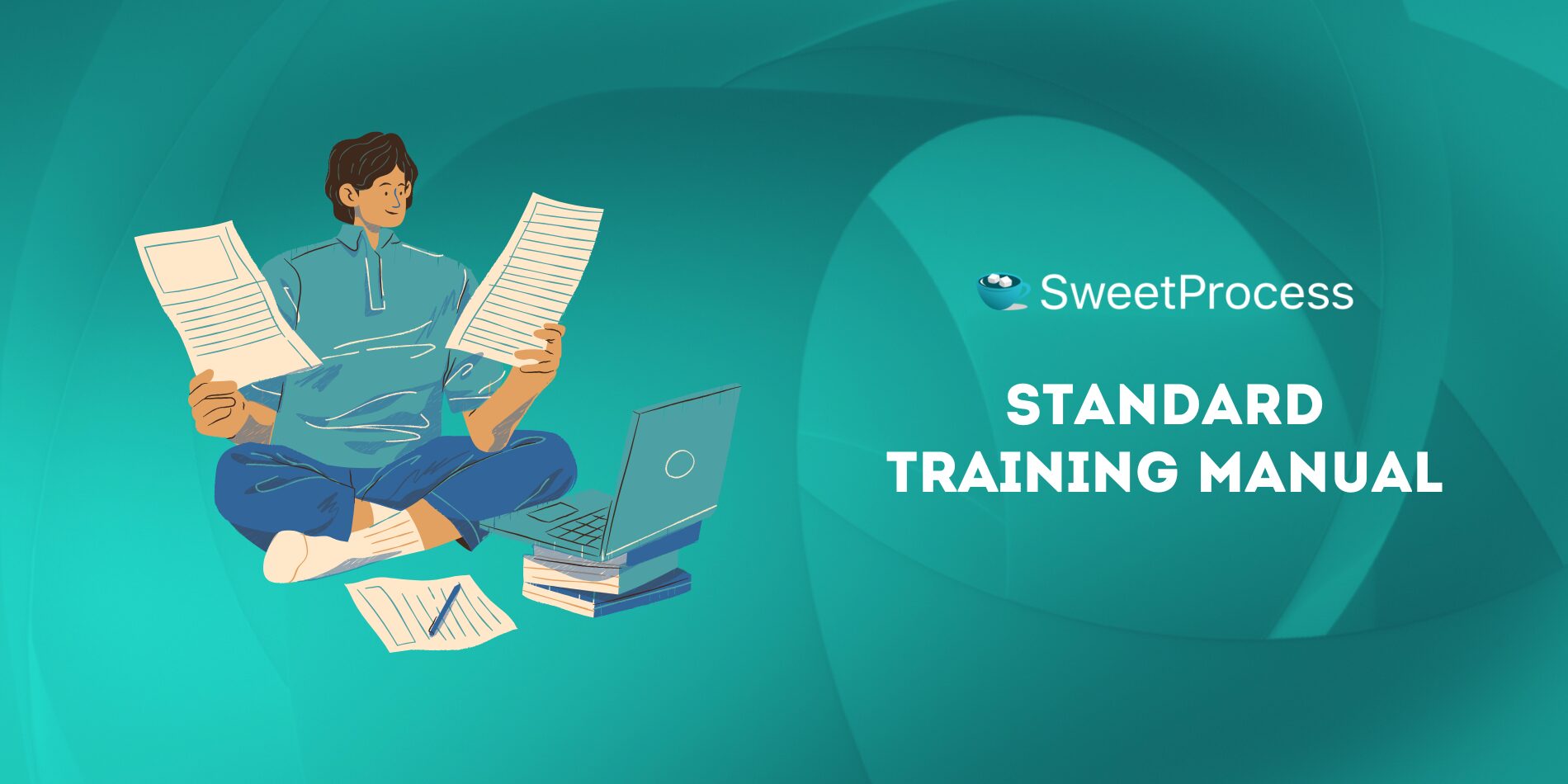
This comprehensive document guides employees in performing their job duties effectively. It covers essential topics such as company policies, work expectations, and standard procedures.
These manuals serve as employees’ go-to resources, ensuring consistency and reducing the need for repetitive training sessions. Additionally, they can include troubleshooting sections and FAQs to address common challenges employees might face.
For instance, a retail customer service and sales training manual includes best practices for handling customers, sales techniques, workplace etiquette, and conflict resolution strategies to ensure smooth customer interactions.
Standard Training Manual Example
Title: Retail Customer Service & Sales Training Manual
Introduction
Welcome to [Company Name]! This manual provides guidelines for delivering exceptional customer service and boosting sales performance. Follow these best practices to create a positive customer experience and drive revenue.
Sections
- Company Overview & Customer Expectations
- Introduction to company values, mission, and vision
- Understanding customer expectations and behavior
- Greeting & Assisting Customers
- Effective customer greeting techniques
- How to actively listen and assist customers
- Sales Techniques & Upselling Strategies
- Proven sales approaches to increase conversions
- Handling Returns & Complaints
- Steps to manage refunds, exchanges, and disputes
- De-escalation techniques for handling frustrated customers
- Code of Conduct & Workplace Etiquette
- Professional behavior and communication
- Dress code, punctuality, and teamwork expectations
2) New Hire Onboarding Manual
Statistics show that companies with a solid onboarding procedure can boost employee retention rates by up to 82%. If you have just hired new talent, investing in structured training is essential to retain them. A new-hire onboarding manual helps employees transition smoothly into their positions by outlining company culture, job responsibilities, and essential tools they’ll need to succeed.
With this document, you can speed up the integration process. Consider dividing it into time-based sections, such as the first day, first week, and first month, and indicate the key things to cover during each phase.
New-Hire Onboarding Manual Example
Title: Welcome to [Company Name]: Your First 30 Days
Overview
This onboarding manual will guide you through your first month at [Company Name]. Our goal is to help you transition smoothly into your role and understand how we operate
Sections
- Day 1: Meet Your Team & HR Essentials
- Introduction to key team members
- Overview of HR policies and benefits
- Week 1: Training on Company Tools & Policies
- Hands-on training with essential software and platforms
- Overview of security policies and best practices
- Week 2: Understanding Your Role & Responsibilities
- Breakdown of job expectations and key responsibilities
- Goal setting for the first quarter
- Week 3: Performance Expectations & Goal Setting
- Performance review process and metrics
- Career development opportunities and growth paths
- Week 4: Career Development & Next Steps
- Networking within the company
- Steps to advance within the organization
3) SOP Training Manual
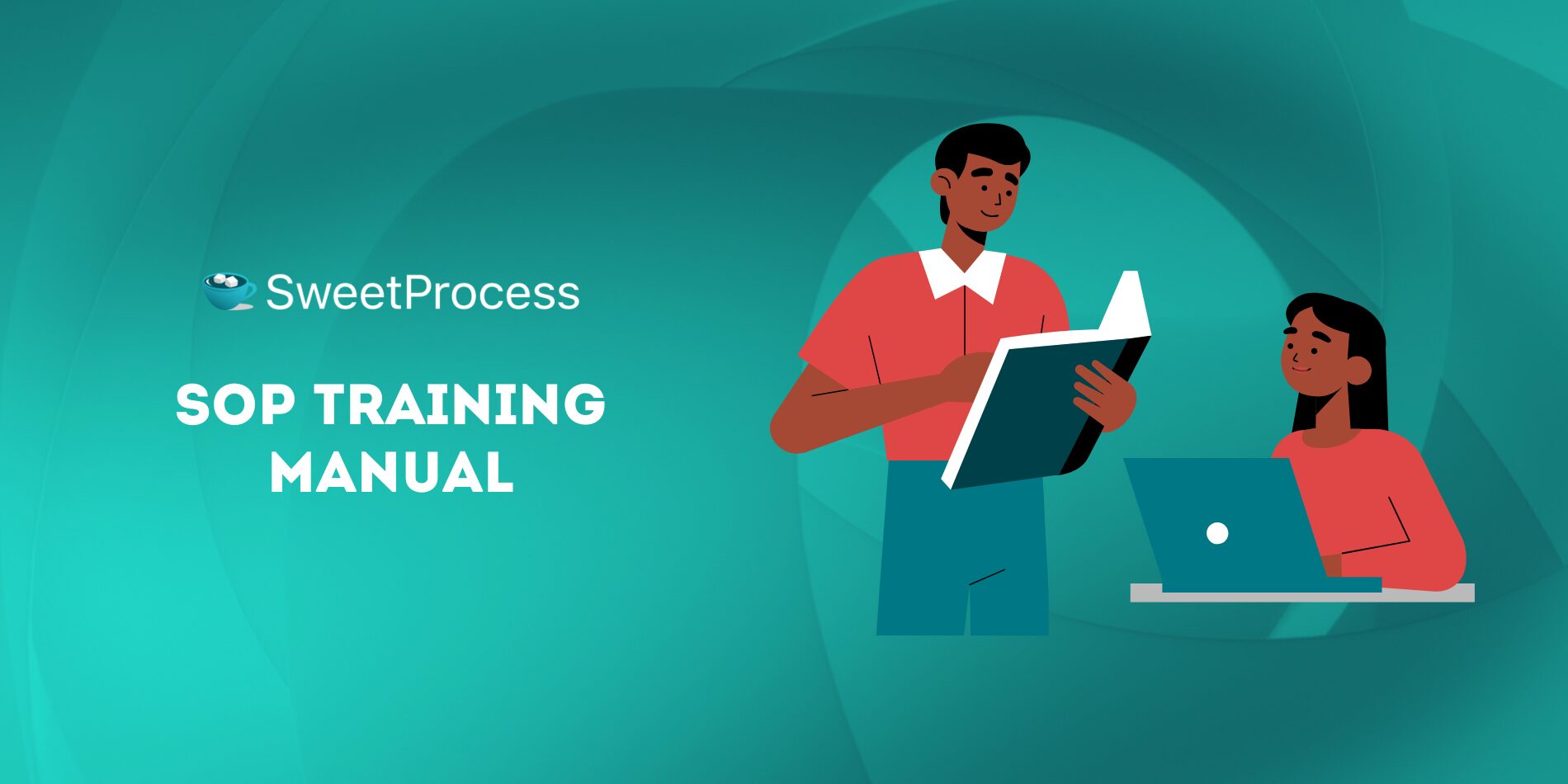
Every company has a standard operating procedure (SOP) that guides operations. Therefore, your new and seasoned team members need to fully understand these step-by-step instructions to execute their tasks efficiently.
SOPs are critical to an organization’s success, especially when maintaining quality control and compliance. In this case, your SOP training manual will include flowcharts, checklists, and role-based responsibilities to enhance clarity.
Here’s an example of a warehouse inventory management SOP detailing how to receive shipments, store products, perform quality control checks, and manage returns.
SOP Training Manual Example
Title: Warehouse Inventory Management SOP
Introduction
This manual outlines the standard procedures for managing warehouse inventory efficiently. Following these steps ensures smooth operations and reduces errors.
Sections
- Receiving Shipments & Conducting Quality Checks
- Steps to verify and document incoming shipments
- Quality control checks and reporting damaged items
- Proper Product Labeling & Storage
- Labeling conventions and barcode scanning
- Barcode Scanning & Updating Inventory Records
- Training on inventory management software
- Regular audits and reconciliation procedures
- Safety Protocols & Compliance Requirements
- OSHA guidelines and safety checklists
- Emergency response and fire safety procedures
- Escalation Procedures for Missing Items
- Steps to report and investigate inventory discrepancies
- Action plans for preventing future losses
4) Employee Handbook
Your employee training session will greatly benefit from having a handbook. Think of all the company policies, workplace expectations, and employee rights a new hire must master. It can be a lot to grasp within the first few weeks or months.
An employee handbook is an excellent training guide because it helps employees understand their responsibilities and what they can expect from the organization. Additionally, it also covers legal requirements, company values, workplace ethics, and escalation procedures for workplace disputes.
[Company Name] Employee Handbook 2025
Overview
This handbook outlines workplace policies, company values, and employee expectations. Use it as a reference for company procedures and best practices.
Sections
- Company Values & Mission Statement
- What we stand for and how we work together
- Workplace Policies & Code of Conduct
- Professional behavior, ethics, and compliance rules
- Compensation & Benefits Overview
- Payroll schedule, bonuses, and insurance coverage
- Remote Work & In-Office Guidelines
- Expectations for hybrid and remote employees
- Diversity & Inclusion Initiatives
- Anti-discrimination policies and support programs
5) Action Plan
An action plan outlines the specific steps an employee or team must take to achieve a goal. For instance, if your sales team has a growth plan for Q1, this action plan covers the timelines, key performance indicators (KPIs), resource allocation, and risk management strategies.
With this manual, your team can stay on track with the sales goals, track progress, and adjust strategies when necessary.
Title: Q1 Sales Growth Action Plan
This action plan outlines key sales goals and strategies for Q1. Follow these steps to increase revenue and meet targets.
Plan
- Sales Goals & KPIs
- Revenue and conversion targets.
- Lead Generation & Nurturing Strategies
- Steps to attract and retain customers.
- Account Management & Client Retention
- Relationship-building techniques.
- Timeline & Implementation Plan
- Breakdown of deadlines and responsibilities.
- Tracking Success & Adjustments
- Evaluation metrics and adjustment methods.
Updates/Changes to Strategy
6) Software Adoption Manual
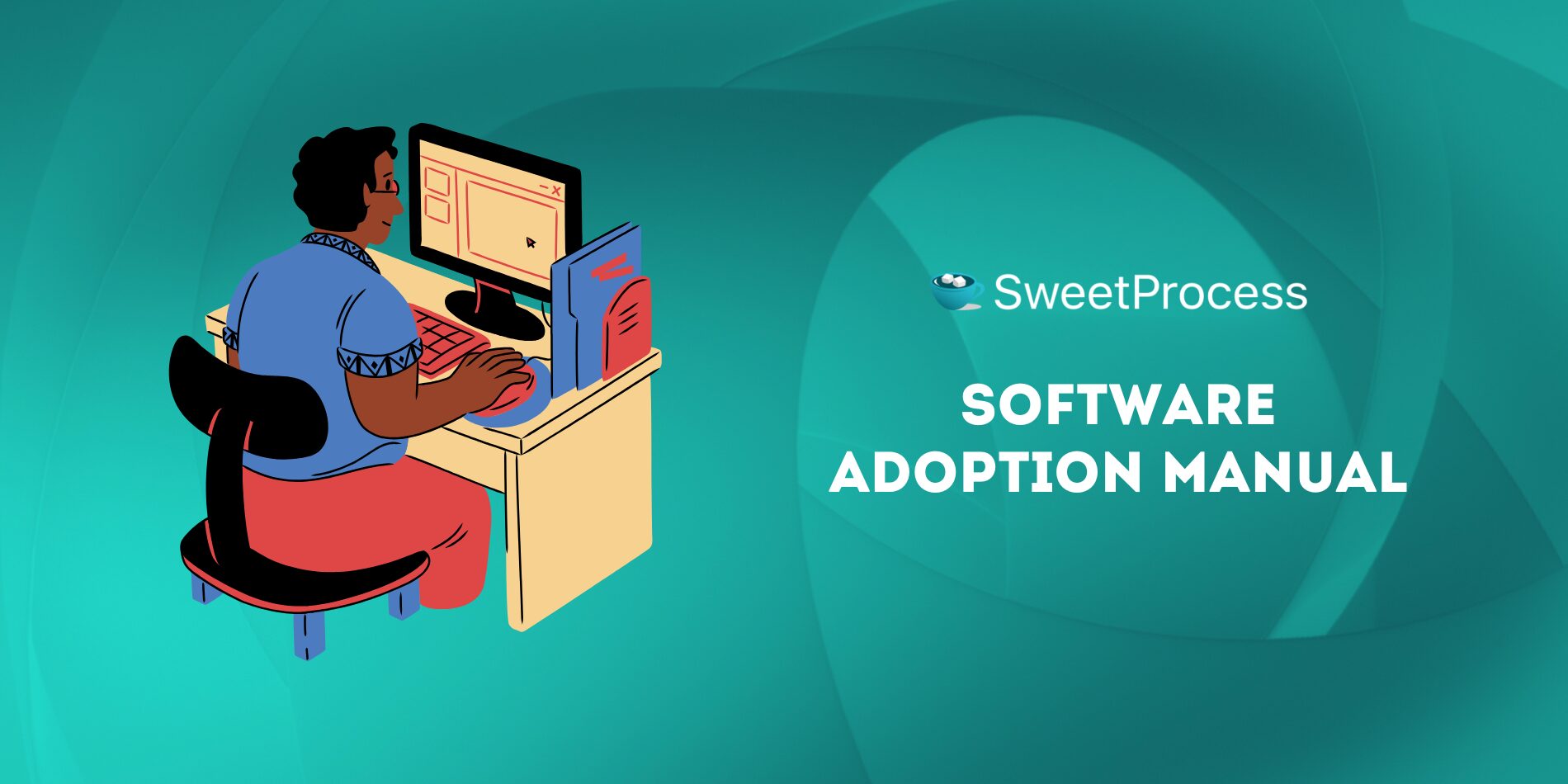
While some business tools have no learning curve, most require training. A software adoption manual will help your employees learn how to use new tools and technologies.
For instance, if you’ve just integrated training manual software, you can create a manual with step-by-step guidance, troubleshooting tips, and best practices to ensure smooth adoption. This guide walks employees through logging in, using dashboards, and integrating third-party tools.
In addition to text, you can add visual elements such as screenshots, diagrams, and video tutorials to enhance these manuals.
Example: CRM Software Implementation Guide
Sections
- Getting Started: Logging In & Dashboard Overview
- Adding & Managing Customer Contacts
- Tracking Sales & Customer Interactions
- Generating Reports & Insights
- Troubleshooting Common Issues
7) Runbook
This training manual includes a set of instructions for handling specific operational tasks—often used in IT and system administration. With a proper runbook, your teams can quickly respond to system failures, security breaches, or scheduled maintenance.
For example, an IT system recovery runbook can outline:
- Steps to diagnose, troubleshoot, and restore systems in the event of a failure.
- Server reboot protocols.
- Restoring data backup.
IT System Recovery Runbook
This runbook provides a structured response plan for IT system failures to minimize downtime and disruptions.
Sections
- Incident Identification & Reporting
- Initial Troubleshooting Steps
- System Recovery Procedures
- Escalation Matrix & Contacts
- Post-Recovery Documentation & Analysis
8) Technical Tutorials
You can break down technical concepts much faster with the proper tutorial. These manuals provide in-depth guidance on using software, coding, or technical systems.
Tutorials often include practical examples, screenshots, and code snippets to assist learners in mastering technical concepts. They may be in the form of written guides, interactive e-learning modules, or live demonstrations.
Here’s a breakdown of an API integration guide for developers that you can use:
Title: API Integration Guide for Developers
Introduction
This tutorial provides step-by-step instructions for integrating our API into third-party applications.
Sections
- Authentication & API Key Setup
- Making API Requests & Responses
- Error Handling & Debugging
- Best Practices & Security Guidelines
9) Troubleshooting Guide
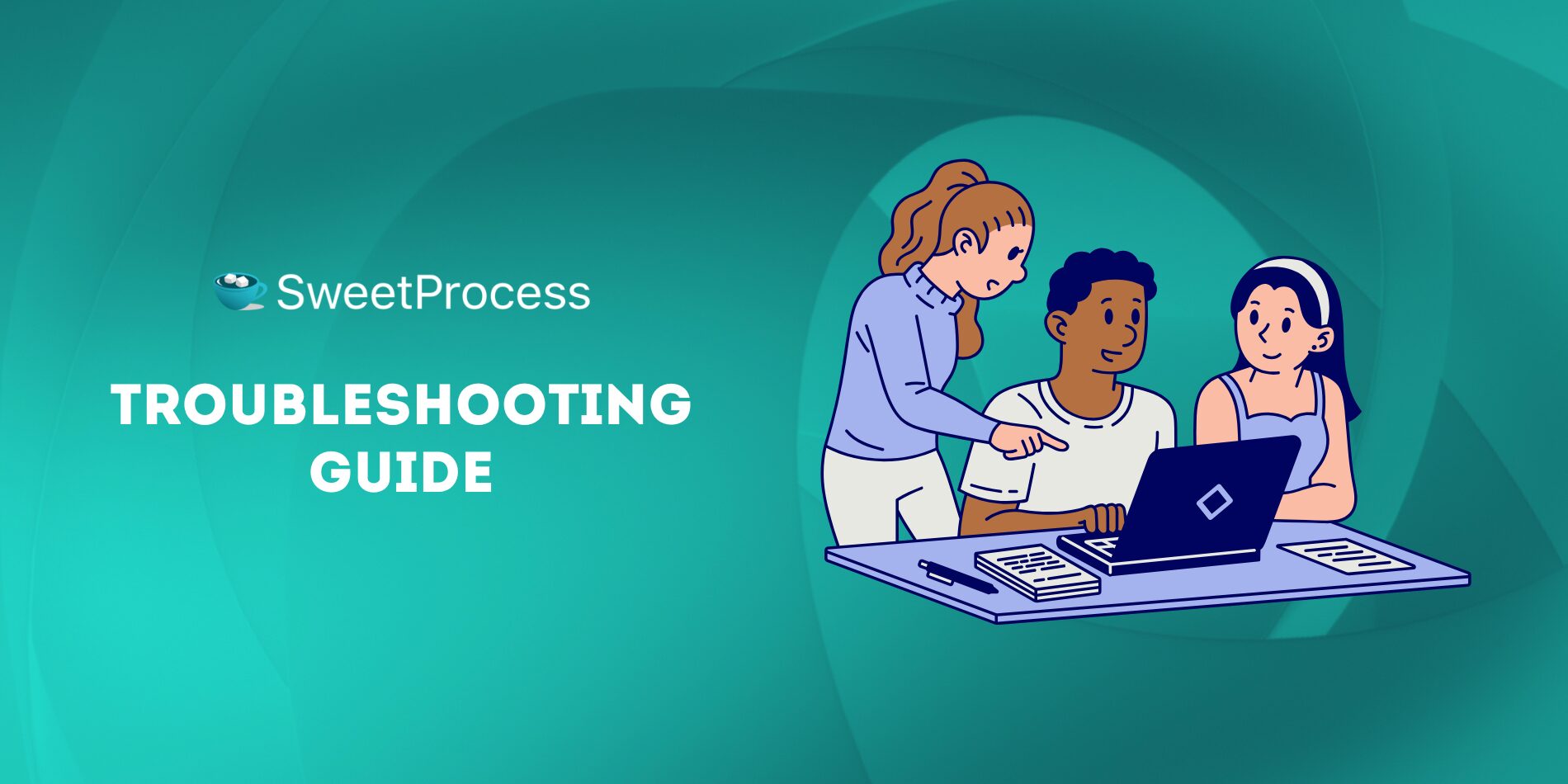
How does your team resolve common technical and operational issues? Do they have a clear reference point?
A troubleshooting guide provides structured solutions for common problems. Your employees can use these manuals when there’s an issue, reducing downtime and minimizing the need for IT support. This guide typically follows a problem-solution format, featuring flowcharts and decision trees for faster resolution.
Example: A customer support troubleshooting guide outlining common software issues, step-by-step solutions, frequently asked questions (FAQs), and contact information for further assistance.
Troubleshooting Guide Example
Title: Printer Troubleshooting Guide
This guide helps employees resolve common printer issues quickly without IT assistance.
Sections To Add
- Paper Jams: Causes & Fixes
- Connectivity Issues & Wi-Fi Setup
- Print Quality Troubleshooting
- Driver Installation & Updates
10) Step-by-Step Guide
Let’s say you just launched a new feature. How can you ensure that your customers don’t encounter issues? A step-by-step guide simplifies complex processes into clear, easy-to-follow instructions.
Investing in user manual software can help you create structured guides that improve customer understanding of your products and services. Employees can also use the same tools to learn more about new company procedures and workflow management. Your guide can also include practical exercises to reinforce learning.
Step-by-Step User Guide Example
How To Process an Invoice in Our ERP System
Step 1: Log in to the ERP System
- Open your web browser and navigate to [Company’s ERP System URL].
- Enter your username and password to log in.
Step 2: Navigate to the Invoicing Module
- From the main menu, locate the Finance or Accounting section.
- Click on Invoices to open the invoicing dashboard.
Step 3: Create a New Invoice
- Click on the New Invoice button.
- Select the customer from the drop-down list or add a new customer if necessary.
- Enter the invoice date, due date, and invoice number.
Step 4: Add Products or Services
- Click Add Item and choose the product/service from the list.
- Enter the quantity and unit price.
- Apply any discounts or taxes as needed.
Step 5: Review and Approve the Invoice
- Double-check all entered details for accuracy.
- Click Preview to see how the final invoice will appear.
- If all details are correct, click Approve Invoice to finalize.
Step 6: Send the Invoice to the Customer
- Click Send Invoice and choose the preferred delivery method (email, PDF download, or print).
- Click Send to deliver the invoice.
Step 7: Record Payment (When Received)
- When payment is received, go to Invoices > Received Payments.
- Select the invoice, choose the payment method, and enter the received amount.
- Click Confirm Payment to update the invoice status.
11) Instructional Video
An instructional video is a visual training manual demonstrating a process or concept. It engages employees more effectively than text-based manuals and is ideal for hands-on training. These videos often include voiceovers, animations, and real-world demonstrations to enhance understanding.
For example, a safety training instructional video that visually explains workplace safety procedures will include fire drills, equipment handling, and emergency evacuation steps.
An example of an instructional video:
Why Are Training Manuals Important?
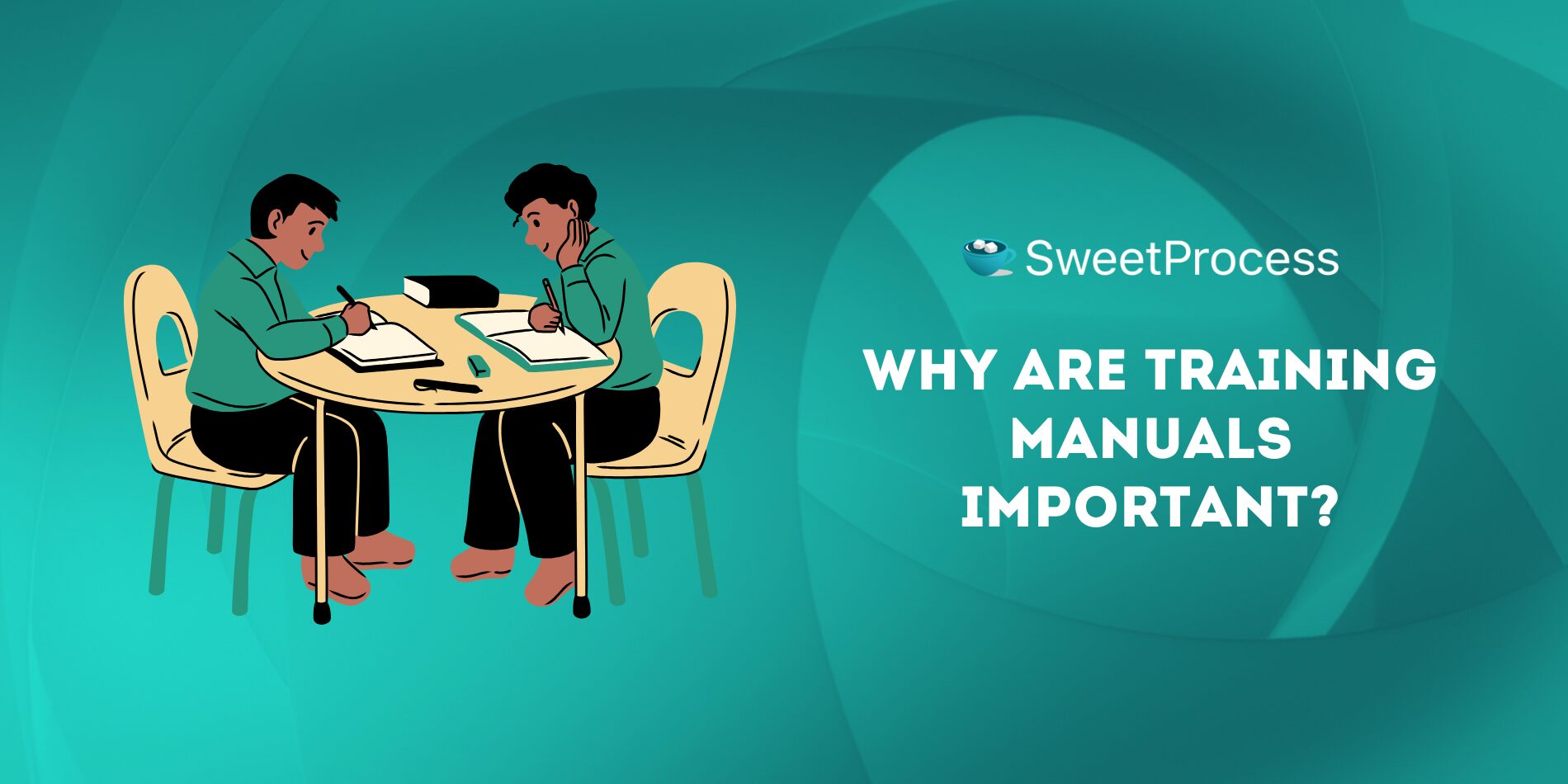
Training manuals are essential tools that offer numerous benefits to organizations. Let’s explore these advantages.
Improves Employee Performance
Every time you hire new employees, they expect clear guidelines during the employee onboarding process. The absence of structured training materials can lead to confusion, errors, and decreased productivity. Eventually, frustrated employees tend to leave for other companies.
However, investing in comprehensive training manuals provides clear instructions and expectations, enabling employees to perform their tasks confidently and competently. For instance, if your customer support team is well-trained, they can address queries much faster and use their time to handle more complex tasks.
Promotes Consistent Work Practices
Imagine a restaurant chain where chefs across different locations prepare dishes using standardized recipes from a manual. Customers receive the same taste and quality everywhere. Consistency is essential for any organization looking to retain customers.
With training manuals in place, your employees can adhere to standardized procedures, minimizing variations in work practices. Your employees become more efficient and productive when the work practices are uniform. Modern Employee Handbook Software streamlines this process by enabling organizations to create, update, and distribute standardized policies and procedures across all locations, ensuring everyone follows the same guidelines and practices
Helps Retain Knowledge
What happens when employees leave for another organization or retire? Do the remaining team members struggle to execute their roles due to a knowledge gap?
This is a clear sign that you need tools to help you retain organizational knowledge. Training documentation software can serve as a repository of institutional knowledge, preserving best practices and critical information. This way, your new employees can perform a specific task without relying solely on veteran workers.
Supports Onboarding
Starting a new job can be overwhelming for most employees. To ease the transition, you should provide training manuals with clear guidelines. For instance, a software company might provide a manual to familiarize new employees with its development protocols, reducing the time required for them to become productive team members.
Promotes Compliance and Safety
Most industries have to follow specific safety and compliance standards. Failing to abide by these regulations comes at a cost—penalties and legal issues. One of the best ways to maintain your compliance is by ensuring every team member knows the proper guidelines.
A training manual emphasizes the safety measures to be followed to prevent workplace accidents and legal problems. For instance, if you run a manufacturing facility, you need this documentation to reduce injuries and ensure occupational safety standards.
Standardizes Processes and Procedures
Standardization contributes to efficiency and predictability. With a training manual, you can document processes, ensuring tasks are performed consistently. A hospital, for example, uses manuals to standardize patient admission procedures to minimize errors and enhance patient care.
How To Create Effective Training Manuals Within SweetProcess
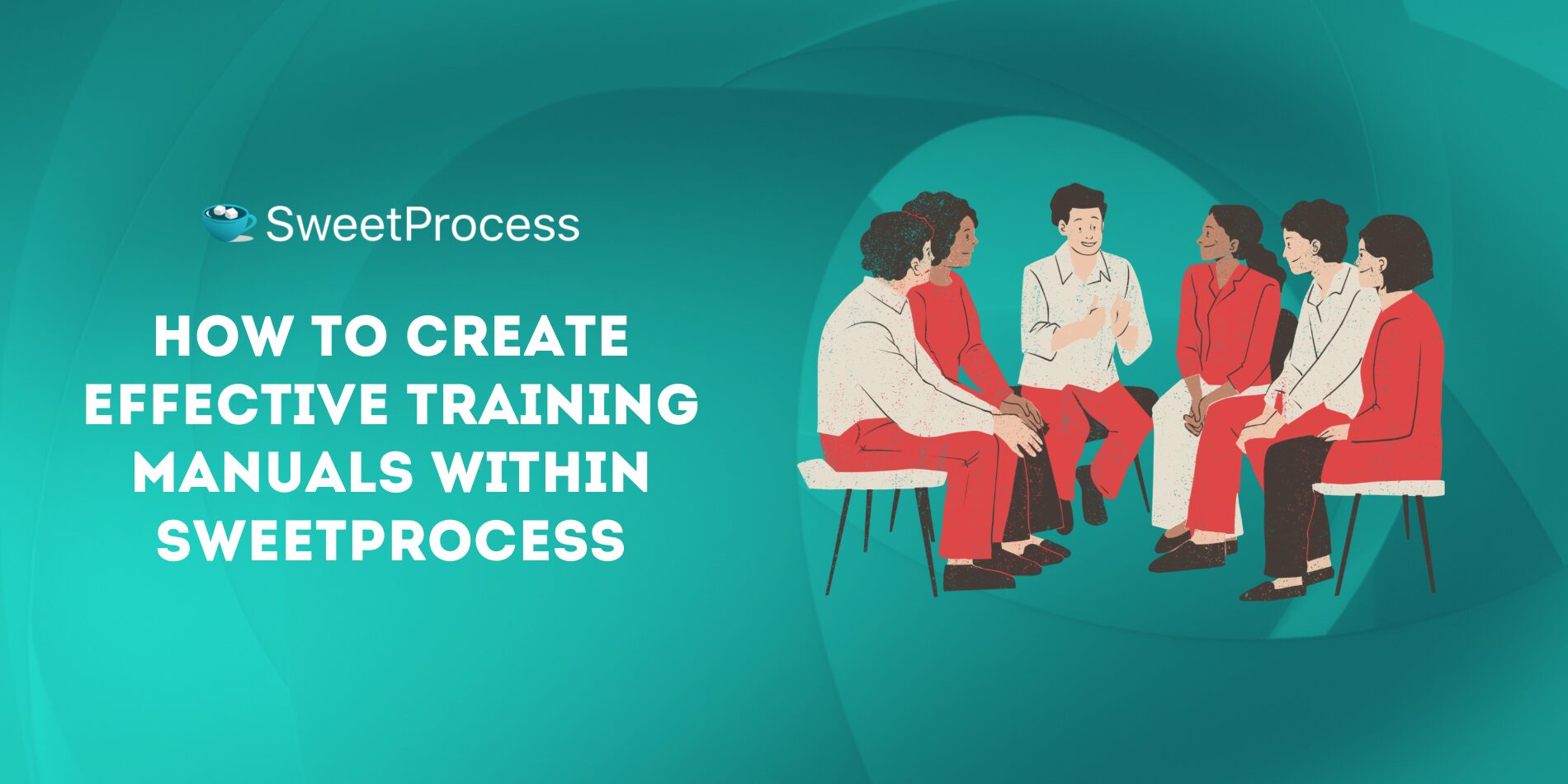
When you think of a tool to help you create an effective training manual, SweetProcess should be your go-to. With SweetProcess, you can draft and manage your processes and procedures to help you during employee training and onboarding.
This centralized platform offers a simple-to-use interface that all employees can use as soon as they sign up. You also don’t have to worry about losing your company information. SweetProcess has a comprehensive knowledge base that stores all the training manuals for easy access.
Here’s how you can leverage SweetProcess to develop robust training manuals:
Document Your Company’s Procedures
SweetProcess simplifies this process by providing an intuitive interface where you can document each procedure step-by-step to boost uniformity. This centralized documentation ensures that all team members have access to the same information, reducing errors.
Here’s how to document procedures:
- Log in to the SweetProcess account.
- Open the “Procedures” tab.
- Select “Create Procedure.”

- Name your procedure and assign it to employees or company departments.

- Add more details in the section labeled “Type something” and include visuals like tables, videos, and images.
- Once done, click “Finished Editing.”
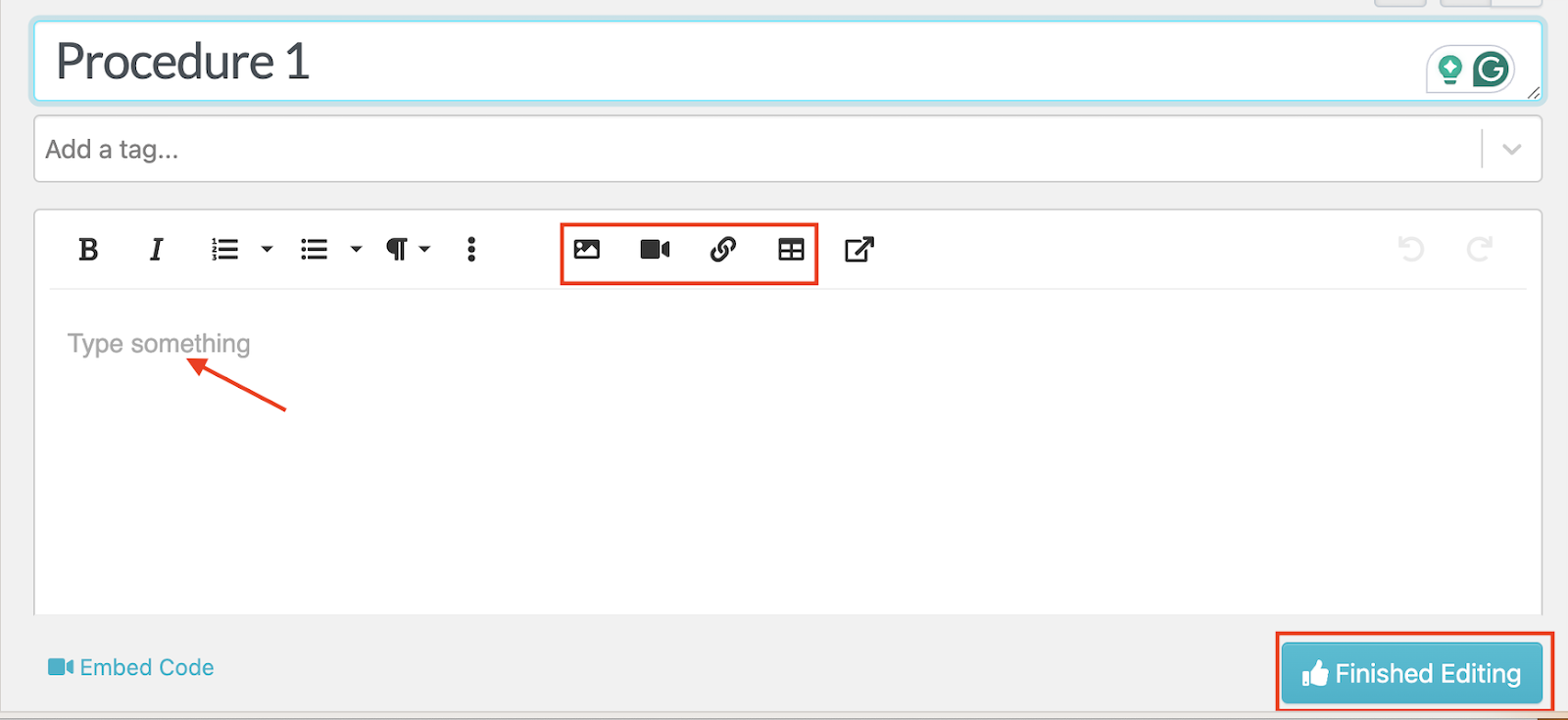
Turn Your Procedures Into Actionable Tasks
Once your procedures are documented, SweetProcess enables you to break them down into tasks. This feature allows employees to follow specific steps to execute their roles.
Assigning tasks within the platform also facilitates tracking progress and accountability.
- Open your procedures and scroll down to the one you need to assign.
- Click on the three dots on the right.
- Select “Assign as Task.”
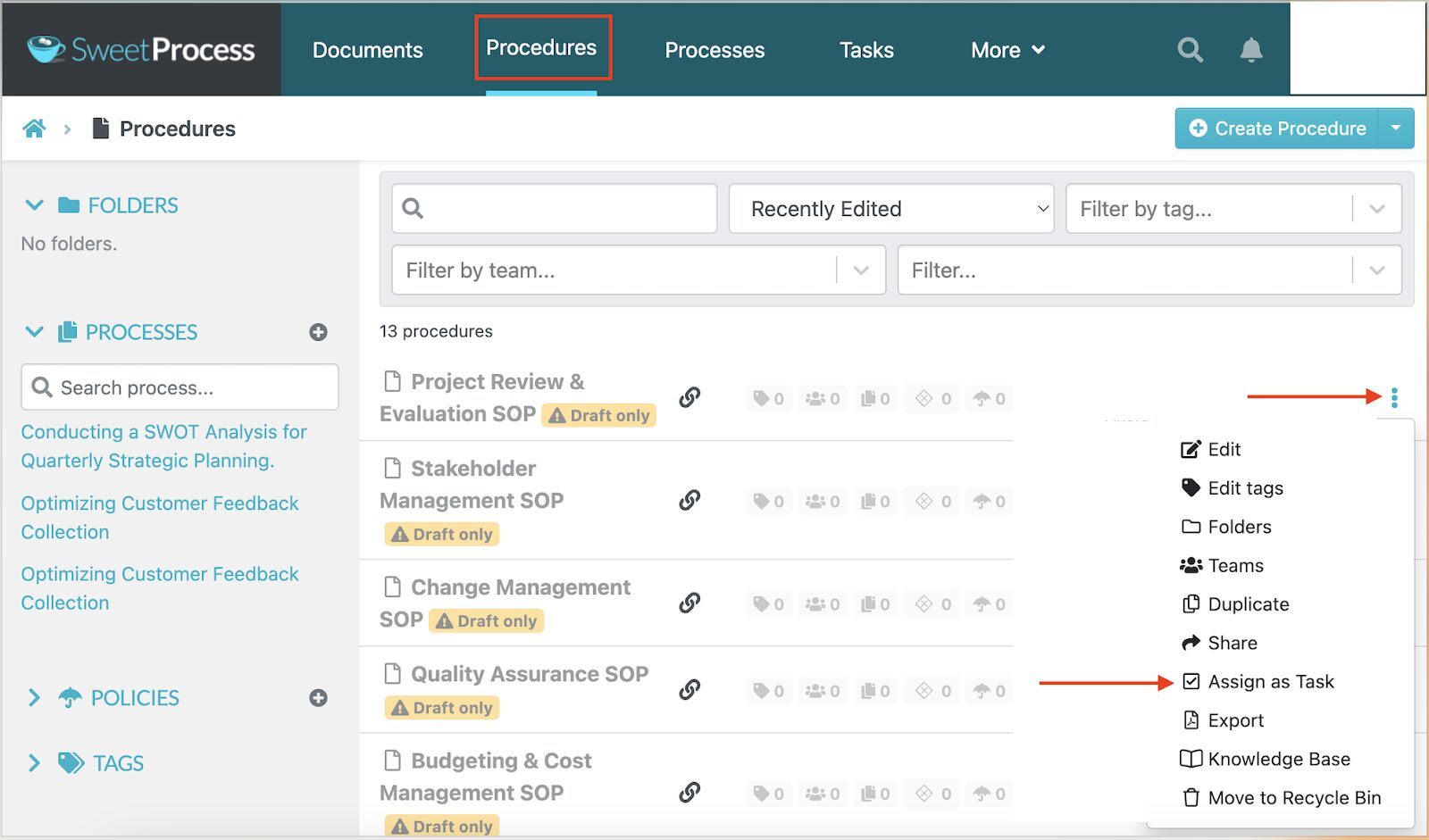
Once your team executes their tasks, you can view the progress and keep everyone accountable.
Document Your Company’s Policies
SweetProcess allows you to create a centralized repository for policies. This way, employees can reference guidelines on compliance, safety, and organizational standards as needed. This centralization promotes a consistent understanding of company expectations.
- From your dashboard, click “More” on the main menu.
- Select “Policies.”

- Tap “Create Policy.”

- Give your policy a title.
- You can draft it manually or choose to draft it with SweetAI, which generates content within seconds.

- You can then edit the content to suit your company policy.
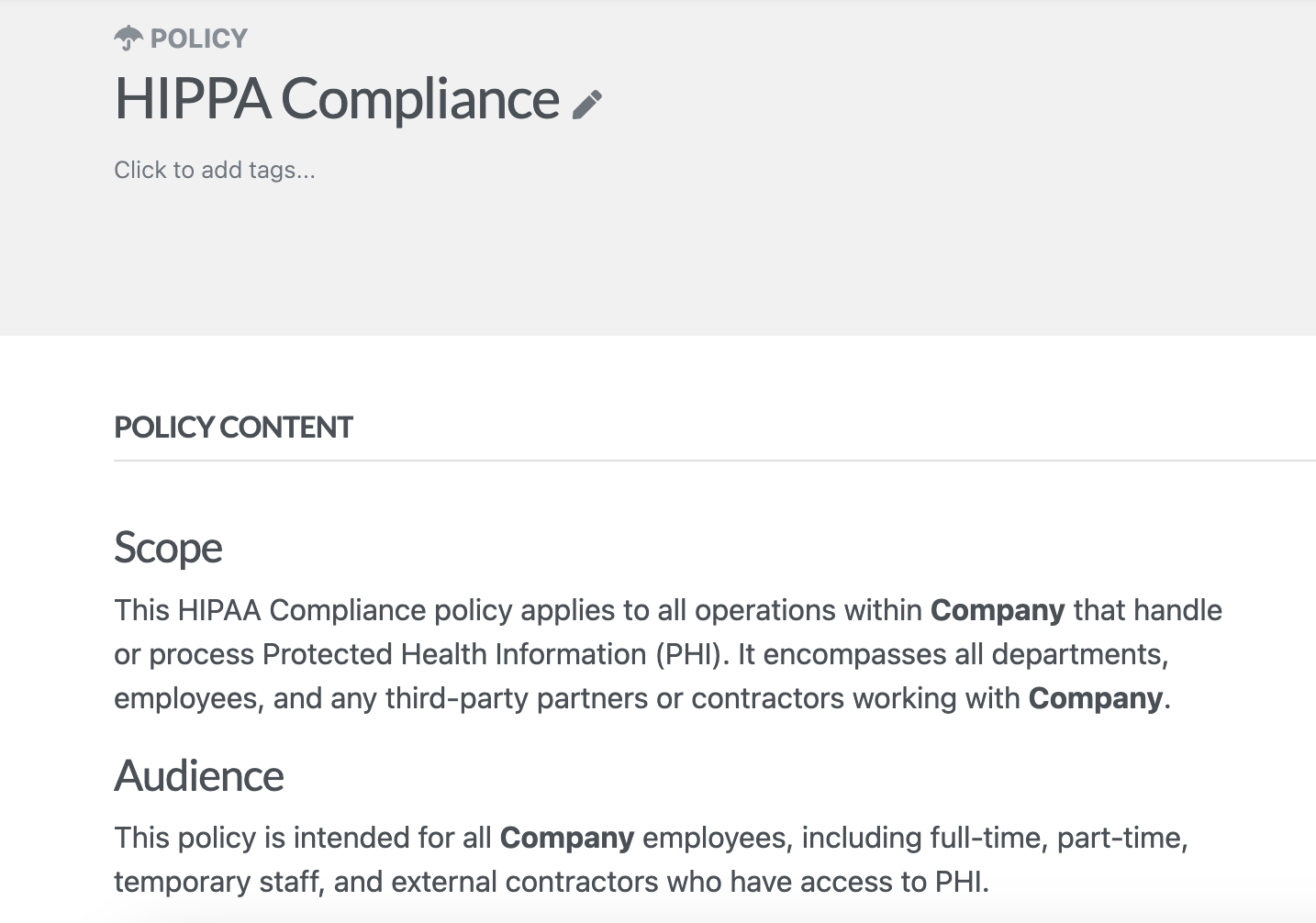
All your employees can access this policy from the SweetProcess dashboard.
Create an Internal Knowledge Base for Employees
An internal knowledge base is a go-to resource for your team members when they need information. With SweetProcess, you can compile procedures, policies, and other essential documents into a cohesive knowledge base.
This feature supports continuous learning as employees can independently access the necessary information. To create an internal knowledge base for employees, follow these steps:
- Select the “More” button.
- Click “Knowledge Bases.”
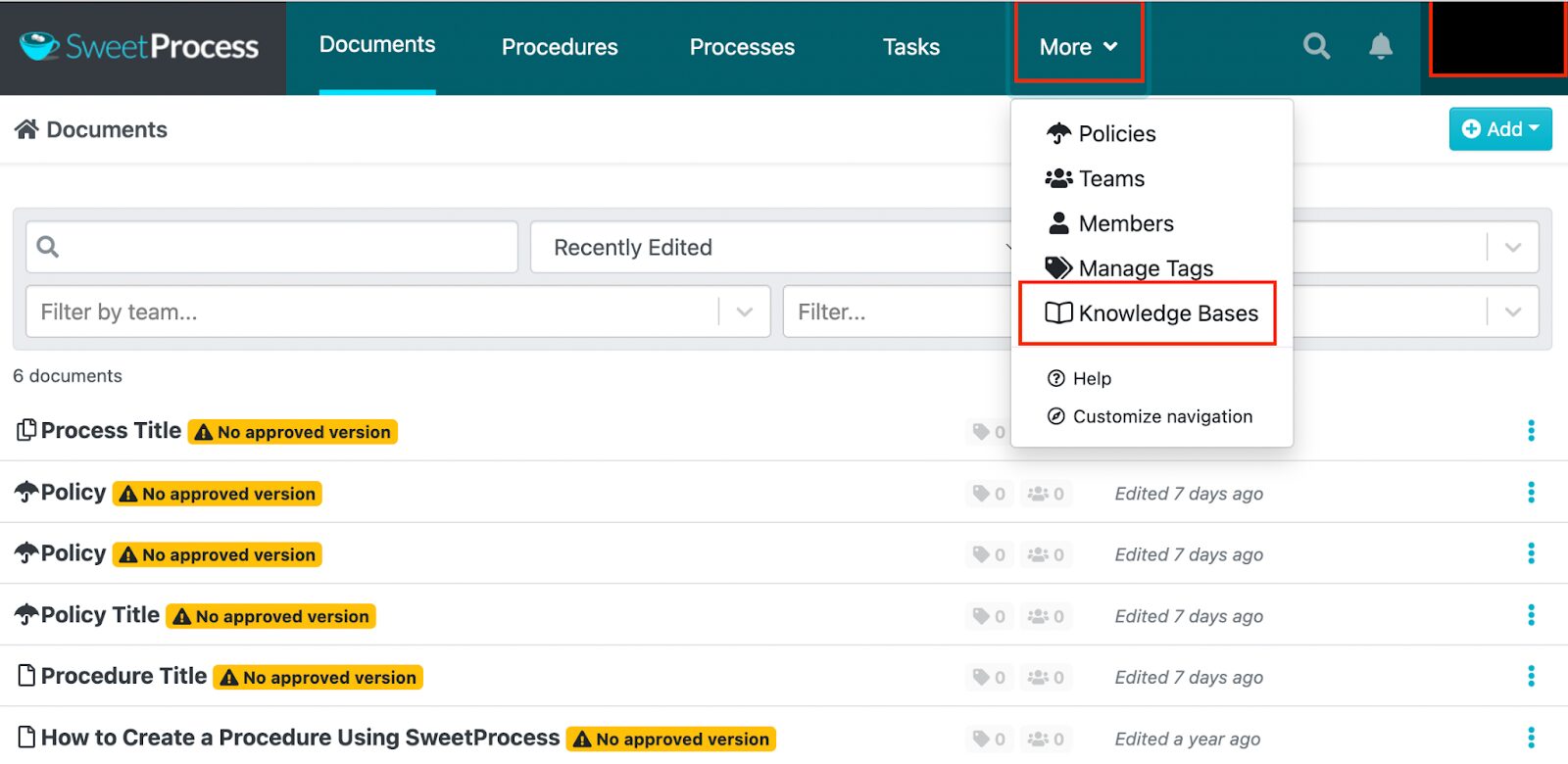
- Name your knowledge base.

- Draft the details of your knowledge base.
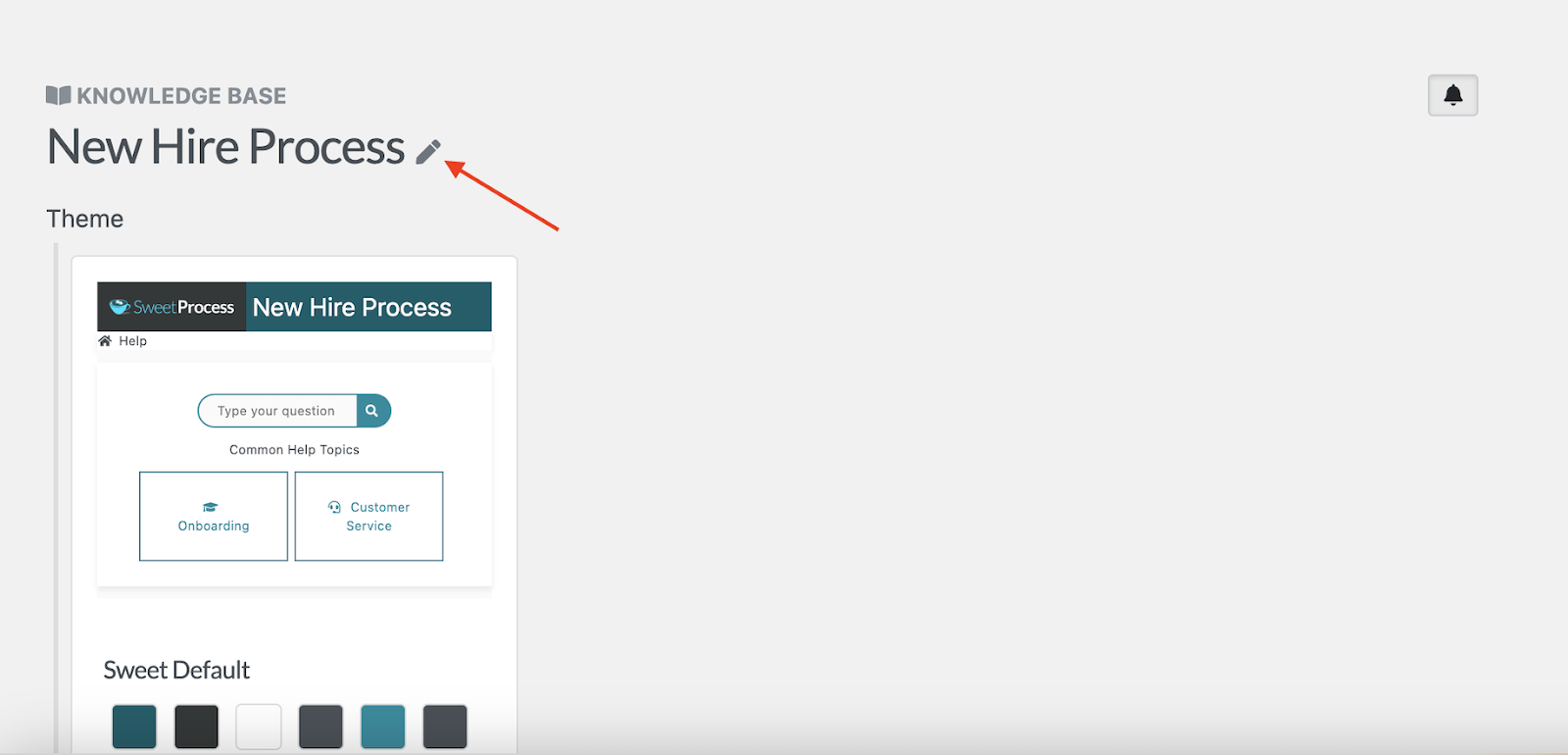
- Check the box to make this knowledge accessible to your employees.
- Save your changes.
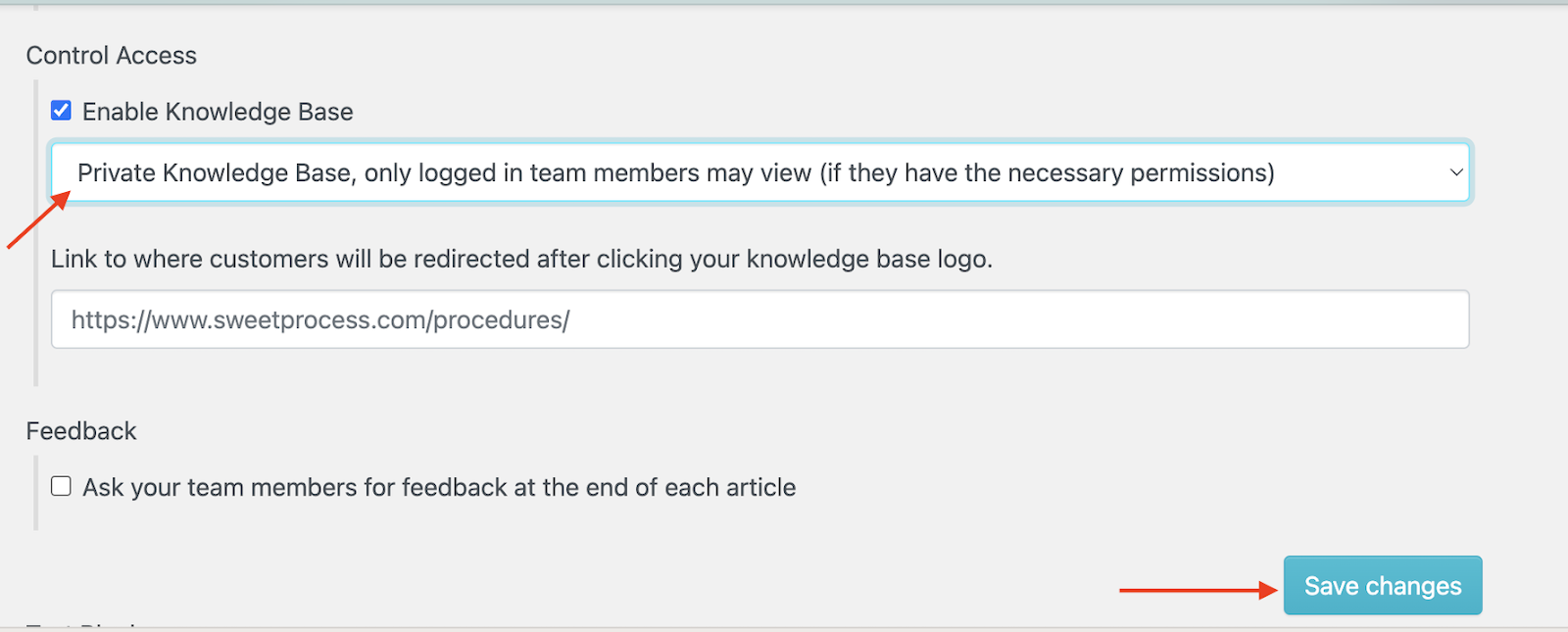
Manage Your Training Manuals in One Place
SweetProcess consolidates all your training materials into a single platform. You can update and manage them directly without using other business tools. Therefore, any changes to procedures or policies are uniformly reflected across all training manuals.
Your team can also access all the manuals to boost their learning and development sessions.
Once you are on the SweetProcess dashboard, click “Documents” to view all the materials on the platform. The search button makes it easier to search for specific documents.

These features have made it easy for several businesses to implement SweetProcess to document training manuals.
A good example is Cullen Insurance Agency, a full-service insurance provider in California. The agency faced significant challenges due to inconsistencies in operations, especially after acquiring other businesses. Employees from these acquisitions adhered to outdated and ineffective processes, leading to operational bottlenecks and a lack of unified procedures across branches.
CEO Zac Cullen sought a solution to address these issues and discovered SweetProcess, which helped standardize and streamline their business processes. By implementing SweetProcess, Cullen Insurance Agency transformed its training manuals in the following ways:
- Simplified documentation: The agency transitioned from cumbersome Word documents to clear, step-by-step guides enriched with visuals, making procedures easier to follow.
- Enhanced searchability: Employees can now quickly locate necessary documents using the platform’s robust search feature, reducing time spent searching for information.
- Efficient training: New hires access up-to-date training materials, accelerating their onboarding process and reducing the learning curve.
- Consistent updates: The cloud-based system ensures that all employees access the most current procedures, maintaining consistency.
- Improved compliance: Standardized processes have minimized errors and ensured adherence to industry regulations, enhancing overall operational efficiency.
Aizer Group, a leading Australian company in the construction and building industry, faced challenges in managing over 20 offshore employees due to a lack of standard operating procedures. This absence led to inefficiencies and potential errors.
Recognizing the need for a more structured approach, Lisa Phillips, the group general manager, sought a solution to boost effective remote management without constant physical presence.
The company had previously relied on extensive, text-heavy documents to outline procedures. However, these lengthy manuals often failed to produce the desired behavioral outcomes among employees. The limitations of this approach became evident when Aizer Group aimed to expand its offshore team, highlighting significant gaps in its existing processes.
To address these challenges, Aizer Group implemented SweetProcess. This adoption led to several key benefits:
- Simplified process mapping: The intuitive nature of SweetProcess allowed the team to break down complex procedures into clear guides, making it easier for employees to follow.
- Accessible reference materials: Centralized documentation gave employees immediate access to the information they needed, reducing dependency on managerial oversight.
- Accelerated training and onboarding: New hires can quickly get up to speed by referring to the well-structured procedures in SweetProcess, leading to faster integration and productivity.
6 Things Your Training Manual Should Include
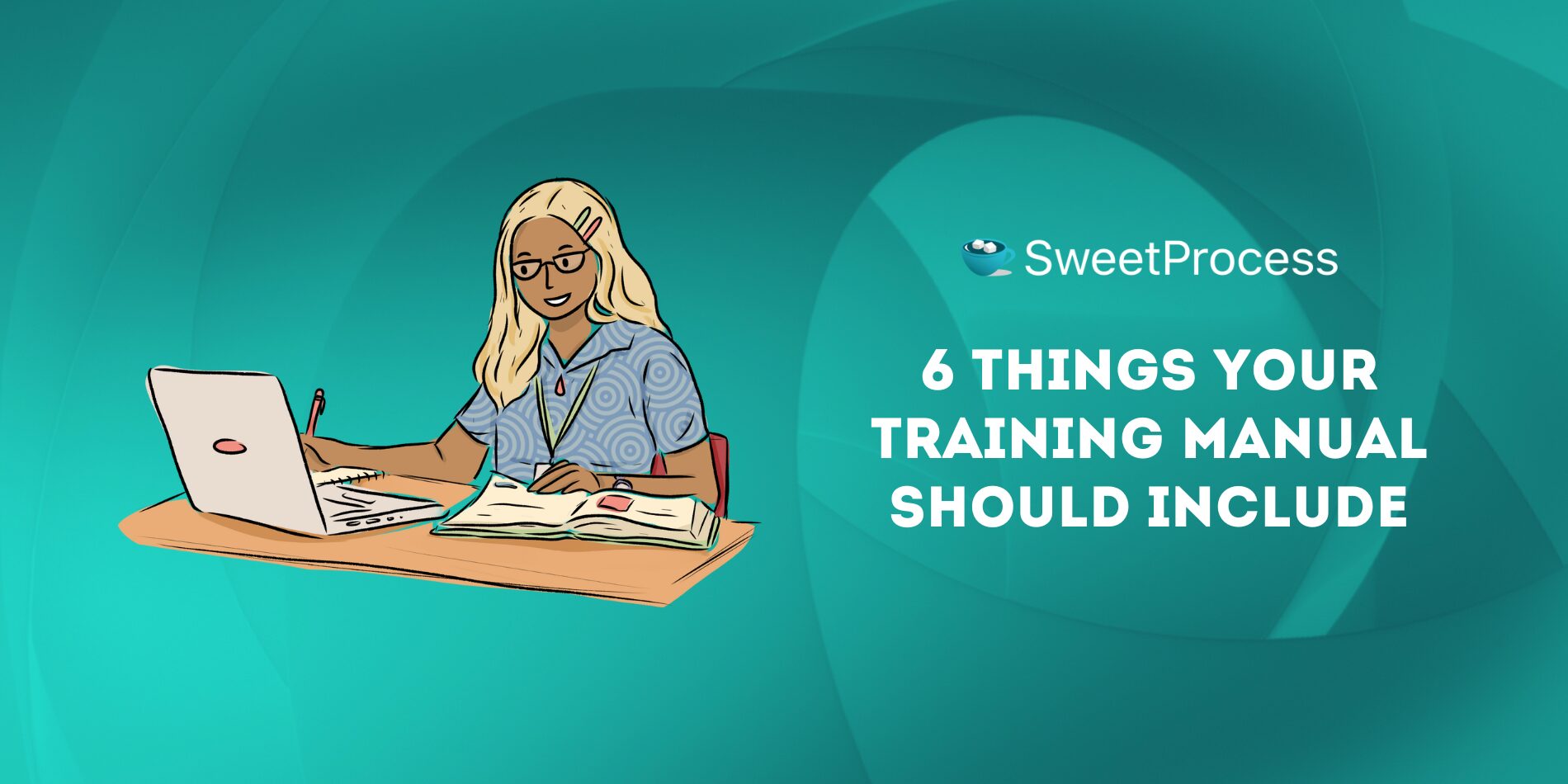
Your employee training session will be more effective if you have the right materials in the proper structure. Let’s take a closer look at the key things you should include in your training manual:
Introduction
Like every other business document, your training manual needs a clear introduction. This section outlines the manual’s purpose and relevance. It’s also the best place to set the tone by welcoming new hires and clearly explaining the organization’s mission, vision, and values.
In fact, a survey shows that 91% of new employees feel connected to the organization if they receive a proper introduction to the company culture. Therefore, this foundational knowledge boosts alignment within the team and provides a sense of belonging from the outset.
Learning Goals
Setting learning goals is one of the ways to ensure that employees know what is expected of them. Clearly defining these objectives gives them a roadmap for what they should achieve at the end of training.
Setting these goals motivates new hires to keep learning until they grasp the skills and knowledge necessary for their positions. In addition, they can also track their progress as they settle into their roles.
Content
Your content is the most important section of the training manual. You should provide detailed information on:
- Company policies
- Procedures
- Role-specific tasks
- Key company information
- Compliance guidelines
Before compiling these training materials, gather all the necessary information and assemble it to serve as a valuable resource for employees. Equipped employees will execute their roles competently and confidently.
Step-by-Step Instructions
Imagine setting up a complex piece of equipment without clear step-by-step instructions. This can be time-consuming and frustrating. In the same way, your employees require step-by-step guidelines that break down tasks into manageable actions.
When the manual is structured in this format, it becomes easier to follow. Additionally, it reduces the chances of errors since every procedure or process is well-explained.
Quizzes and Activities
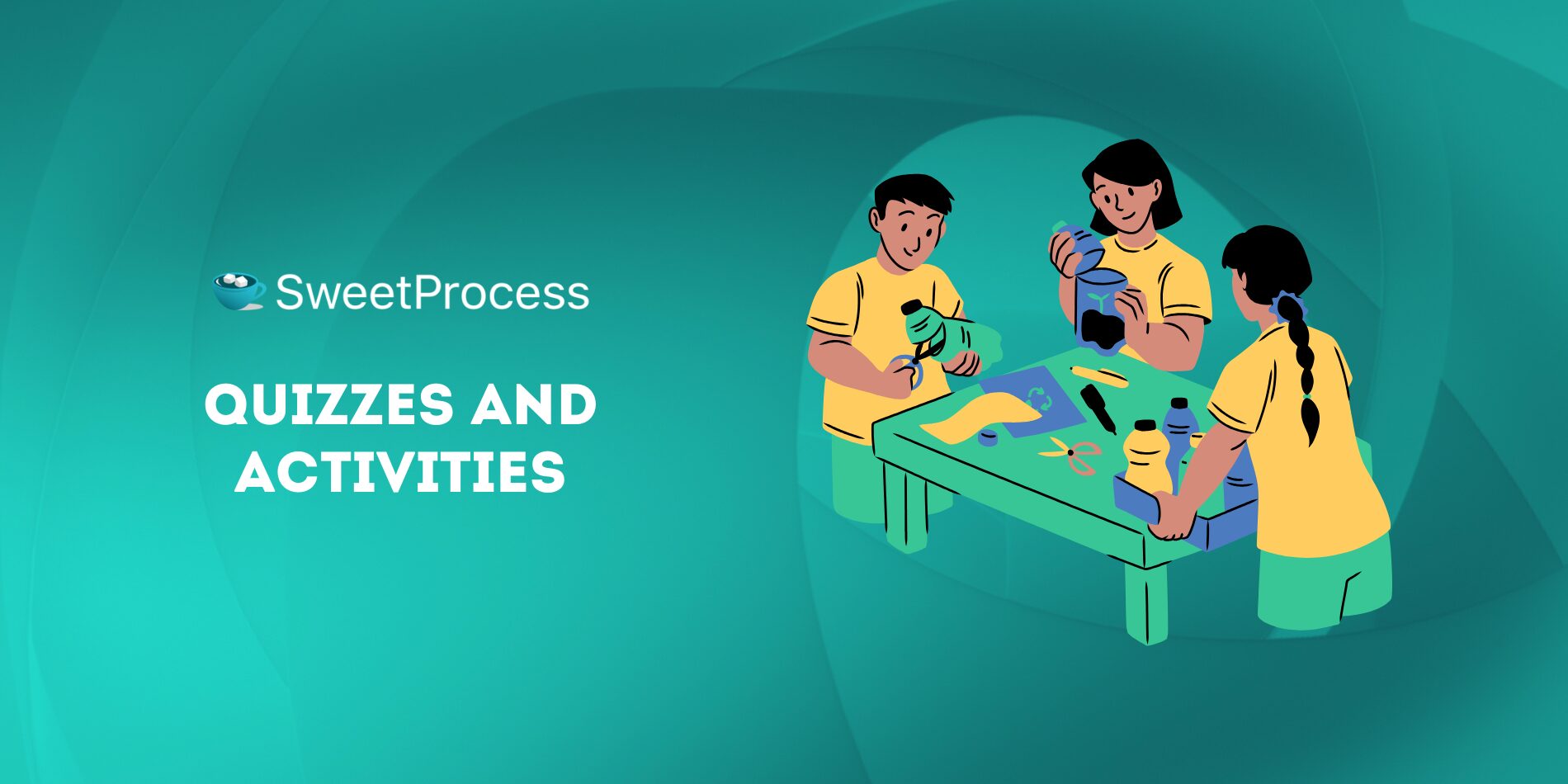
Recent research shows that human beings have an attention span of 47 seconds. Therefore, your training manuals need to be engaging for them to be effective. Incorporating quizzes and interactive activities within the manual reinforces knowledge and allows employees to apply what they’ve learned in a practical context.
It also boosts retention rates because the interactive elements make the training process more enjoyable.
Tips and Best Practices
What separates a good employee from a great one? It’s often the insider knowledge and best practices that come with experience. Including these insights in the manual, especially from seasoned employees, provides the rest of the team with valuable shortcuts and strategies to excel in their roles.
Training Manual Best Practices
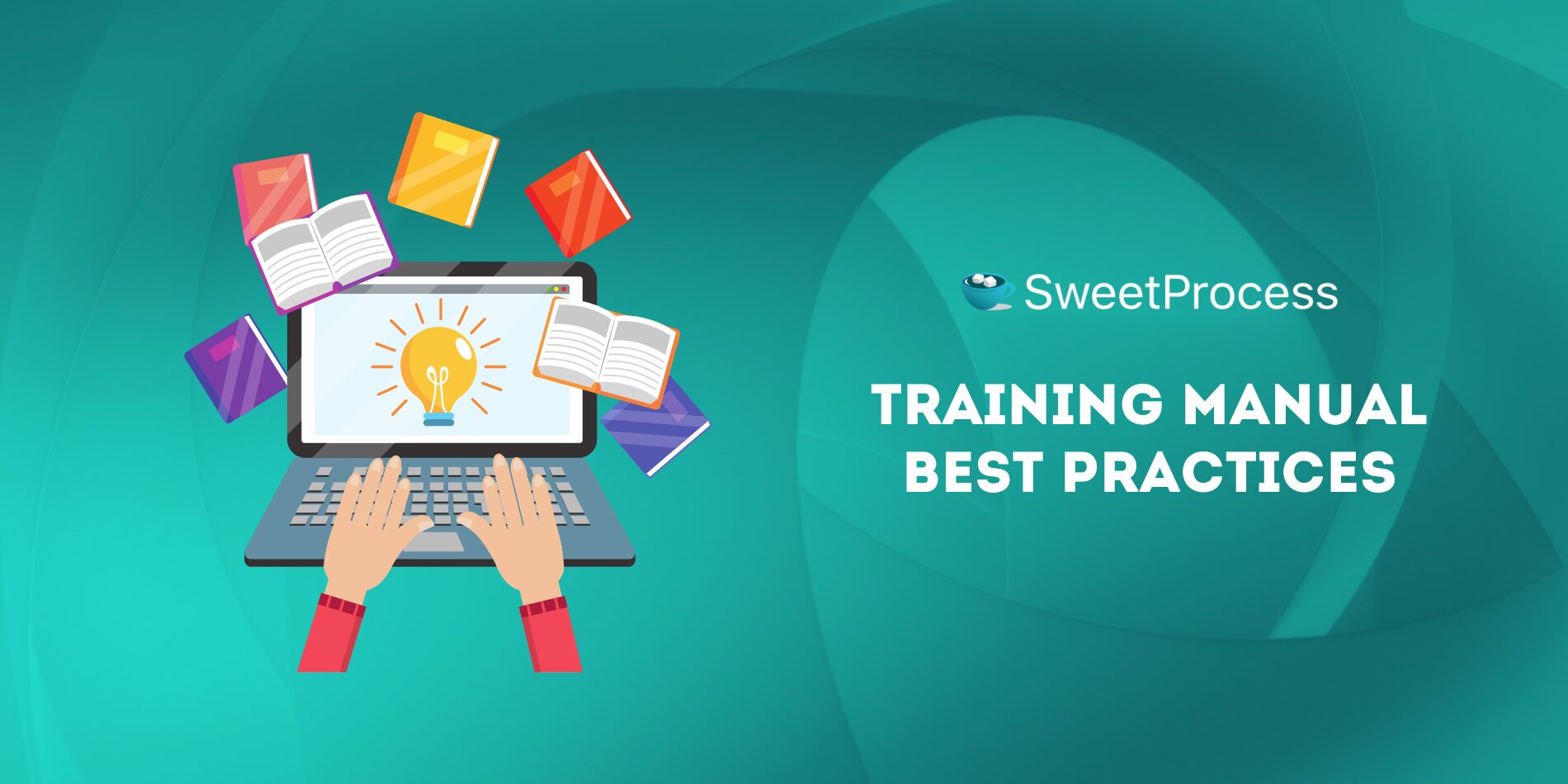
While creating a training manual may seem straightforward, you need to carefully consider various elements to ensure its effectiveness. Here are some key practices to pay attention to:
Incorporate Your Brand Identity
Imagine a training manual that feels disconnected from the company’s brand. Your employees will also struggle to relate to the material. As you create a manual, integrate your brand’s colors, logos, and tone of voice throughout the manual.
New hires are just getting used to the brand. Therefore, it’s better to reinforce consistency across all the materials. Having a uniform approach ensures that the training materials resonate with the company’s culture and values, making the learning experience more cohesive and engaging.
Make the Manual Interactive
Interactive content improves the engagement rate by 52.6% compared to static content. Keep in mind that human beings have a short attention span as you create this training manual.
As sales engineer and coach, Aileen McNabb puts it:
“In my last poll, sales engineers and managers told me the biggest challenge with training isn’t a lack of interest—it’s time and practicality.”
This means your training manual should work with your team’s reality, not against it. Interactive formats are a great solution because they offer flexibility. Some elements deliver quick wins, while others offer depth.
For instance, you can incorporate interactive elements such as:
- Quizzes
- Clickable links to additional resources
- Drag-and-drop activities
- Decision-making scenarios
When employees are engaged, they can apply their knowledge to real-life scenarios, which helps them execute their roles.
Add Real-World Examples
Employees are more likely to remember training content if it’s relatable to real-life situations. As you develop the training manual, consider including case studies and practical scenarios to bridge the gap between theory and practice.
For instance, a customer service manual can feature dialogues based on actual customer interactions, providing employees with concrete scenarios to learn from. By analyzing these examples, employees can better understand how to handle similar situations in their roles.
Use Plain Language and Avoid Jargon
Using plain language ensures that your training material is accessible to all employees, regardless of their background. Avoiding industry-specific jargon prevents confusion and ensures that the content is easily understood, leading to more effective training outcomes.
However, if you need to include these industry-related acronyms in the manual, add a glossary explaining their meanings.
As Rachel Elrom, a technical editor and documentation lead, says,
“You should be prepared for all scenarios by explaining each topic in as much detail as possible. Approach the training materials as if they’re in part resource materials for the particular topic or skill—they are!”
Structure the Content for Clear Navigation
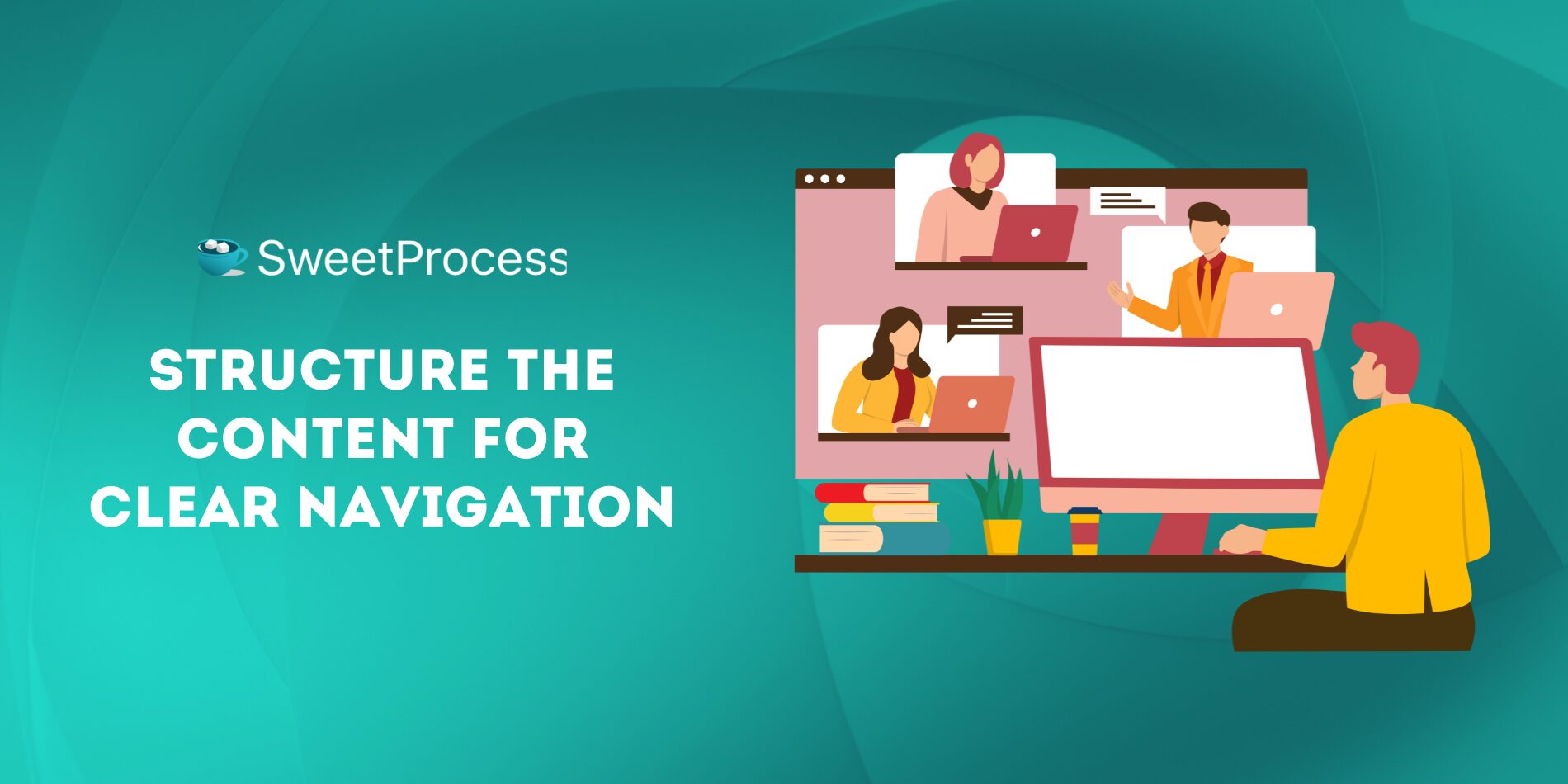
In the same way that books have chapters and headings, you also need to structure your training manual to be easy to read and follow. To achieve this, you can add the following elements:
- Clear headings
- Subheadings to cover different topics
- Bullet points to break down complex text
- Table of contents linked to each section
- Short paragraphs for easier reading
Tanvi Grover, a training development expert, shares,
“What’s important is “not” to load too much information. For example, conducting training on ‘advanced version of any developed product’ requires the trainer to emphasize more on “new”, “distinctive” and “important” features, rather than delivering training from the start. We need to analyze that the targeted audience might be already equipped with some level of information and skills in this case and hence avoid overloading information.”
Following a logical flow allows employees to locate information easily.
Add Explanatory Notes for Complex Instructions
When dealing with complex or technical processes, you’ll need additional notes to clarify concepts. These notes provide additional context, clarify potential misunderstandings, and offer insights that employees might not immediately understand.
Sunanda Chakrabarti, the associate operations manager at Indegene, explains,
“A common mistake I often see in training manuals (published ones, sometimes from big companies) is coherence when it comes to consistent use of either an active voice or a passive voice…
Since training manuals themselves are quite dry in content, readers quickly lose interest and just keep it aside to figure things out on their own.”
This insight explains why clarity and supplemental notes matter. If the manual isn’t engaging or easy to follow, employees will skip it. For instance, in a manufacturing company, the operational manual for complex machinery should be accompanied by detailed notes and diagrams. These additional explanations help employees reduce the likelihood of errors and enhance safety in the facility.
Ensure Accessibility
Whether your team works remotely or on-site, your training manuals should be accessible to everyone. Today’s business environment is quite diverse; therefore, you need to provide translations and digital formats that employees can use from anywhere in the world.
Ensure that visuals are clear and descriptive to keep the employees well-informed. For instance, if your team is hybrid in different geographical regions, you can adopt cloud-based software and store all the training manuals on the platform. These tools also come with access controls so you can determine which employees can view or edit the manuals.
Seek Feedback and Peer Review
How can you be sure your training manual is effective? Here are some ways:
- Seeking feedback from employees
- Conducting peer reviews within departments and the entire company
For instance, once you have completed drafting, you can circulate the training manual among a group of employees to get immediate feedback.
This collaborative approach allows you to gather insights into what’s working and what’s not. It also allows you to refine the content, address any gaps, and ensure that the manual meets the needs of its users.
How To Make a Training Manual Interactive
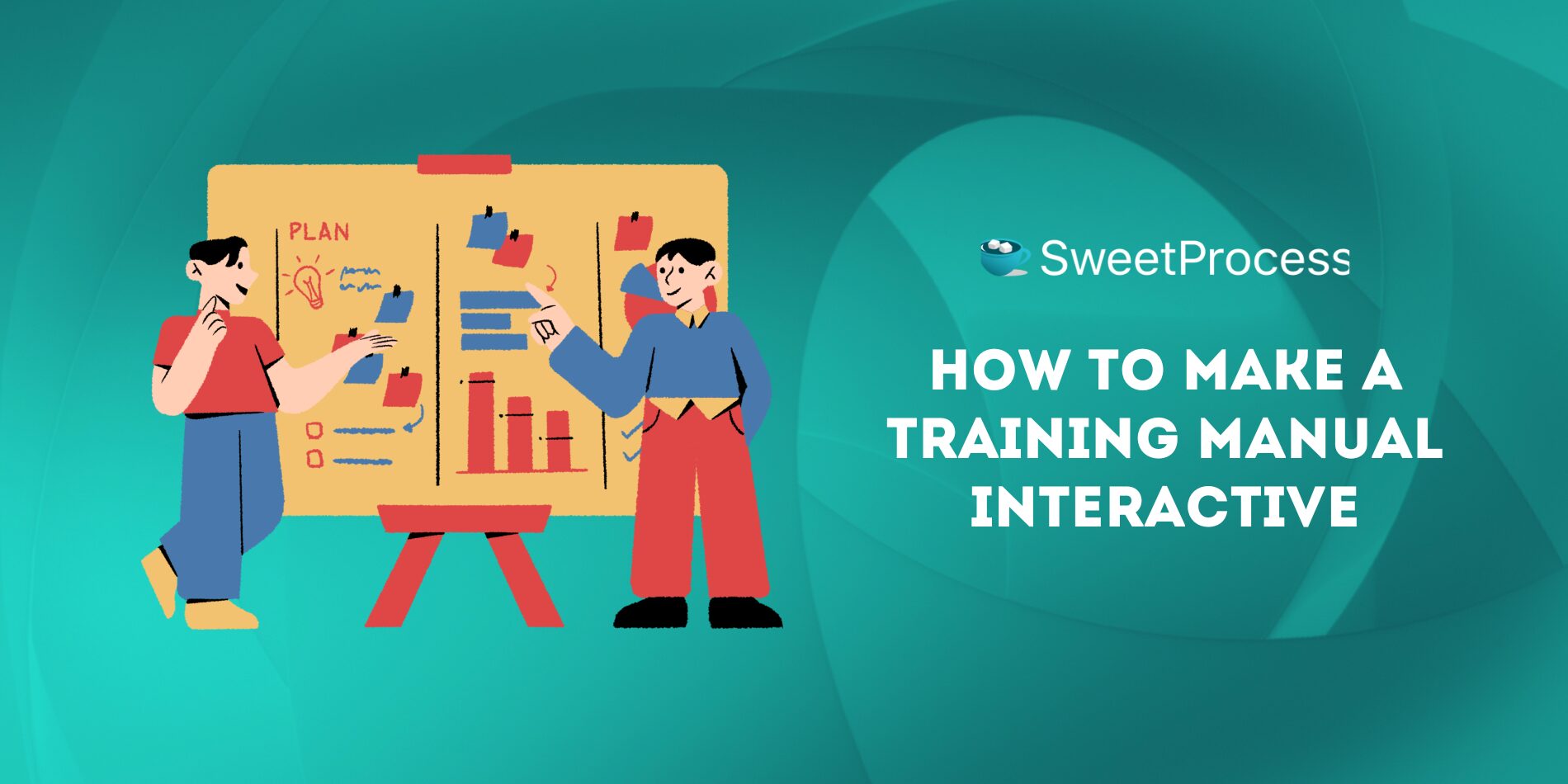
A static and text-heavy training manual can quickly become tedious for users. It can also lead to disengaged employees and poor information retention. To enhance engagement and learning effectiveness, you need to prioritize interactive elements.
Here’s how you can transform your training materials into an engaging experience:
Use Multimedia Elements
Instead of using lengthy paragraphs to explain a process, why not use visual elements that employees can follow? Here are some examples:
- Videos: A step-by-step demonstration can simplify complex concepts and visually reinforce instructions.
- Infographics: These visuals summarize key points in a visually appealing format, making information easier to digest.
- GIFs and animations: Short animations can be useful for illustrating movement and sequences.
For example, a company onboarding manual can include a short welcome video from the CEO or a visual tour of the workplace. This personal touch helps new employees feel connected to the company from day one.
Incorporate Quizzes and Polls
Testing knowledge helps reinforce learning and ensures employees absorb key information. Instead of just providing reading material, add multiple-choice quizzes at the end of each section to recap important takeaways.
You can also add questions to clarify common misconceptions or polls to encourage employees to reflect on what they have learned and apply it to real-world situations. This hands-on approach makes the lesson stick.
Add Interactive Scenarios
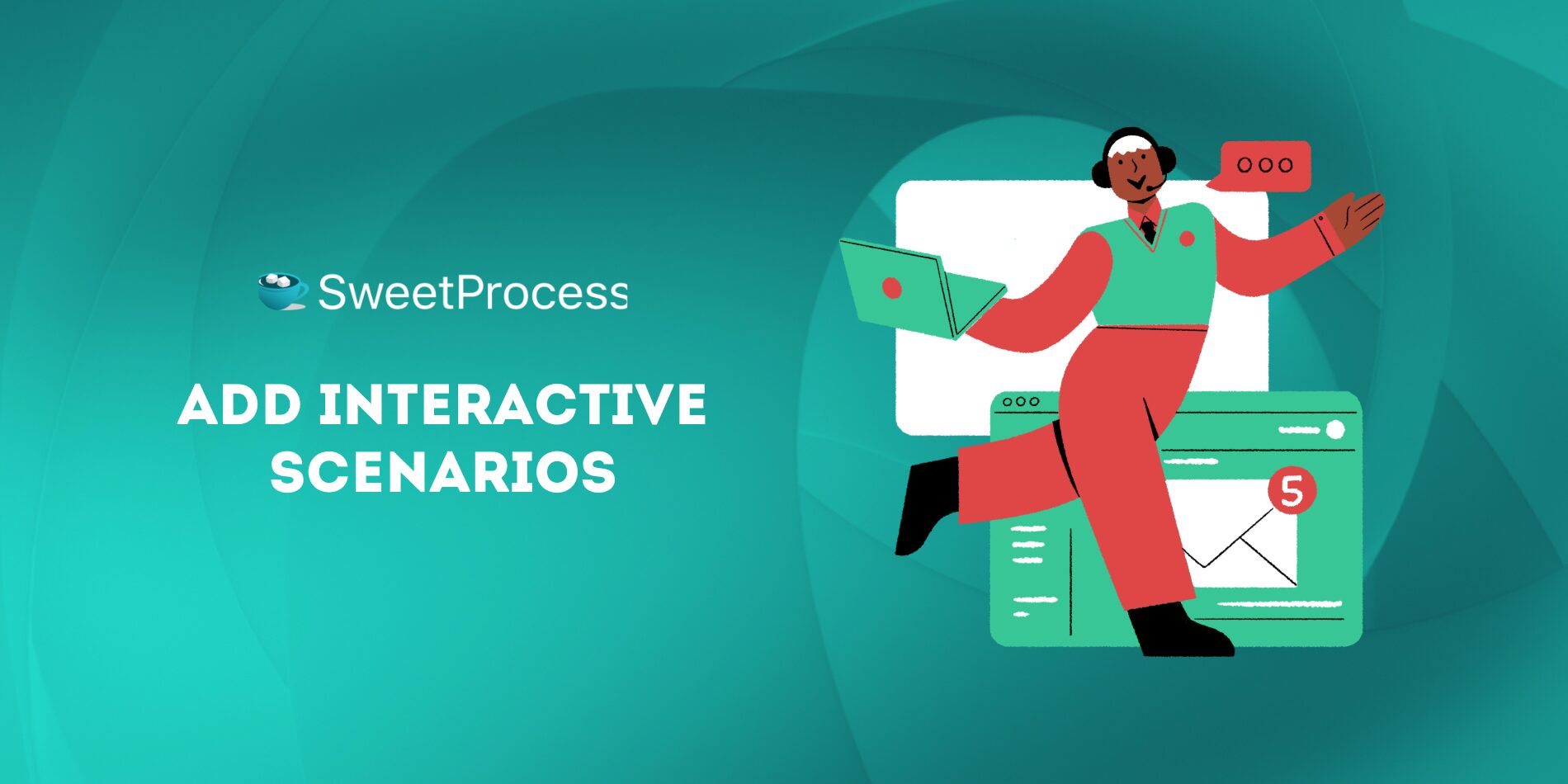
If your training manual is for the customer support team, you can add interactive chatbots that allow employees to practice responding to different customer inquiries and provide instant feedback on their responses.
This type of real-world application is the best way to solidify learning. Instead of simply telling employees what to do in certain situations, provide them with scenarios where they make decisions, simulating real work challenges. You can also conduct role-playing exercises where employees practice skills in a guided environment.
Provide Checklists and Worksheets
Actionable learning is key to a successful training manual. Consider including printable or digital tools such as:
- Checklists to ensure employees follow steps in the correct order. These tools are great for onboarding or safety training.
- Worksheets that allow employees to take notes, answer questions, or brainstorm ideas.
- Templates that guide employees through common tasks, reducing mistakes and improving efficiency.
For example, a marketing training manual template can include a social media post checklist to ensure all brand guidelines are met before publishing. Employees can actively use this tool to reinforce what they’ve learned.
Gamify the Experience
Gamification adds an element of fun to the training. By incorporating game-like features, you can make learning feel more rewarding. Here are some elements you can add:
- Points and badges for completing sections or excelling in quizzes
- Leaderboards to encourage friendly competition
- Timed challenges that test knowledge
Providing small incentives can boost participation and morale.
Enhance Your Company’s Training Manual With SweetProcess

Employees require resources to help them improve their knowledge as they work. Training manuals are a key part of this journey. They are critical for employee development and ensuring team members are well-versed in company protocols, values, and expectations. Crafting well-structured and detailed manuals helps your employees perform their duties with confidence.
Furthermore, your team will be more productive, and you will have a cohesive organizational culture. The right tool makes the creation process more seamless.
Integrating SweetProcess into your organization’s workflow can significantly enhance the creation and management of training manuals. With features such as collaborative editing, task tracking, and multimedia integration, SweetProcess ensures that your manuals are thorough, engaging, and accessible to all team members.
